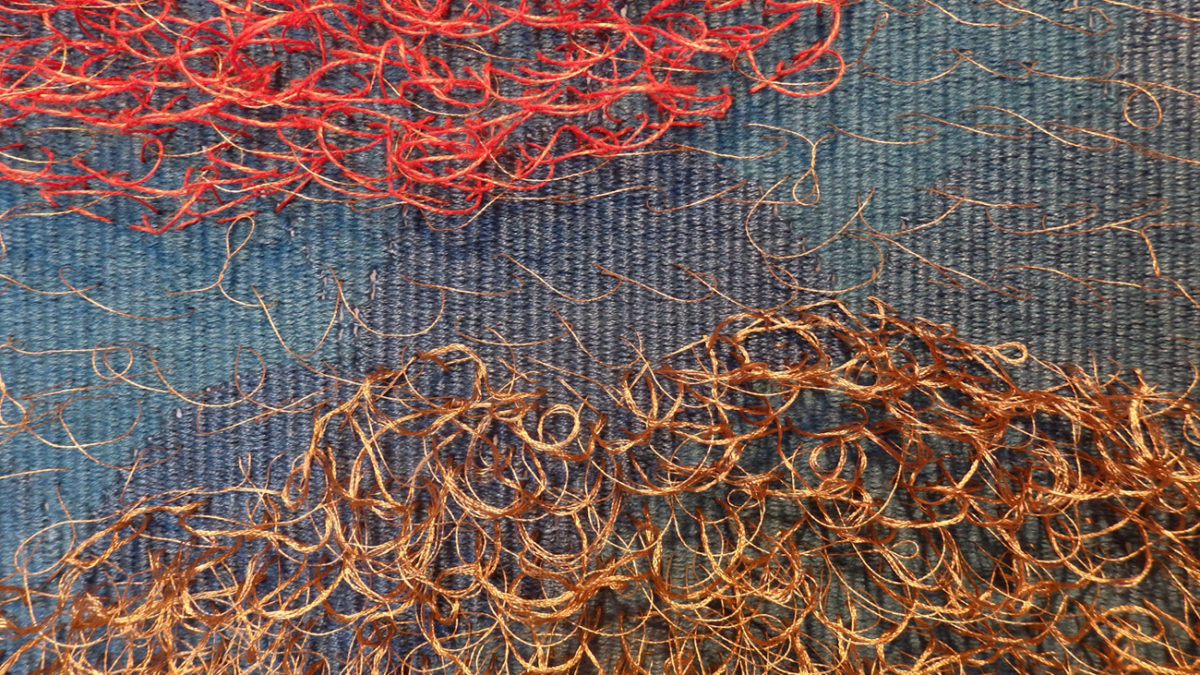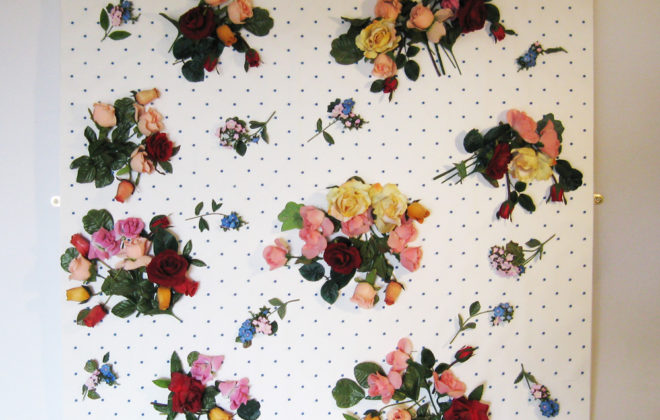What’s so special about tapestry weaving?
One of the great strengths of tapestry weaving is the surfaces that can be created. Each medium has its positives, and with tapestry, yarns can be used in multiple ways to create texture in bas relief or even into the third dimension. Here are a few of the ways I have explored possibilities with yarns over the surface.
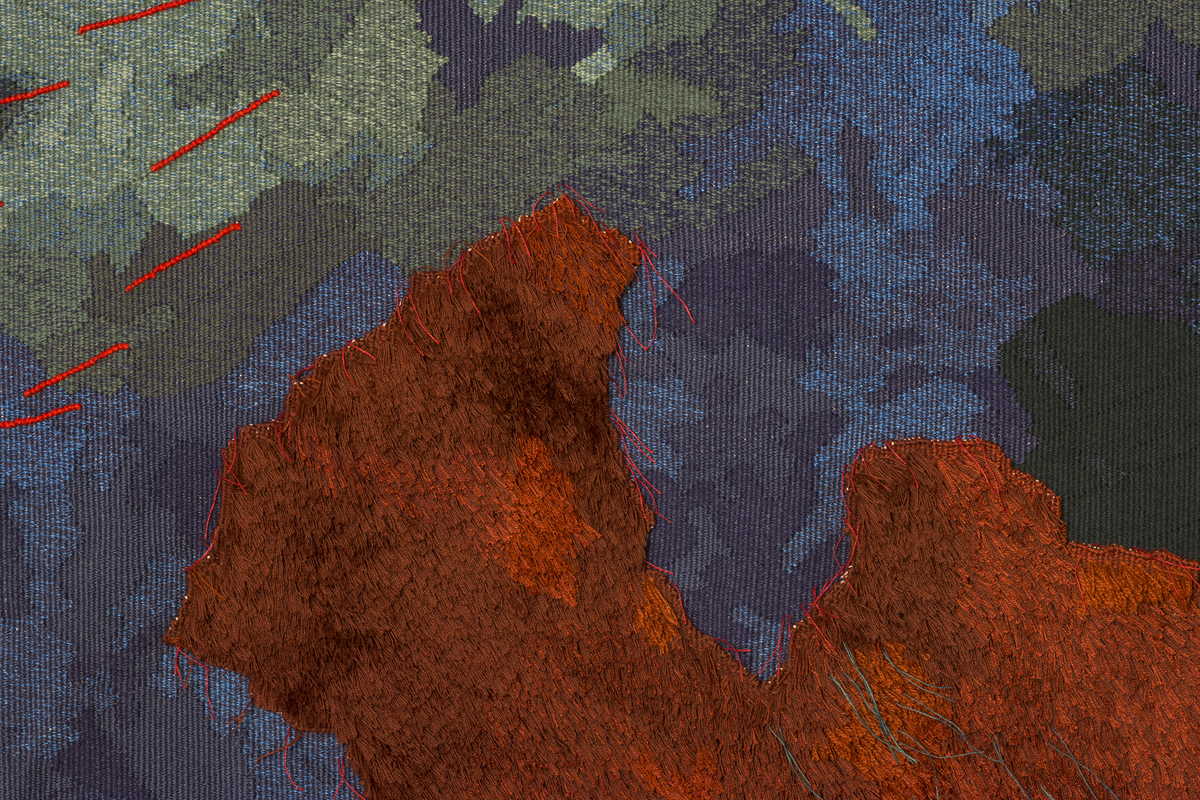
Tufting means using knots made in the same way that Persian carpet weavers work, but while they concentrate on short and dense knots, a tapestry weaver can do whatever they like. For example, in Another Country, I covered a section of the tapestry with dense knots in light-absorbing wool in closely graded colours, then included longer strands of hemp in a contrasting colour. Set against the adjoining flat weave which uses light-reflecting linen, it means that the contrasting textures of each material are highlighted.
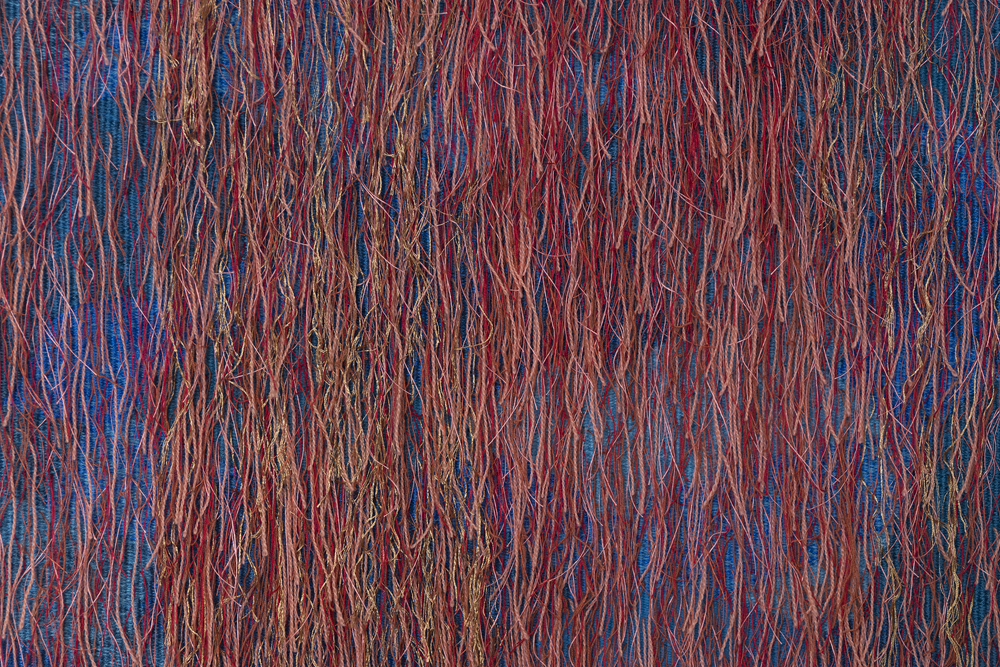 Tangle uses the same type of knot, just much longer than would be practical in a floor covering. The idea here was to use the colour and texture of the wool, linen and metallic to make a zingy contrast with the base colour. The density is thicker and thinner in different areas, and one or another of the colours is emphasised.
Tangle uses the same type of knot, just much longer than would be practical in a floor covering. The idea here was to use the colour and texture of the wool, linen and metallic to make a zingy contrast with the base colour. The density is thicker and thinner in different areas, and one or another of the colours is emphasised.
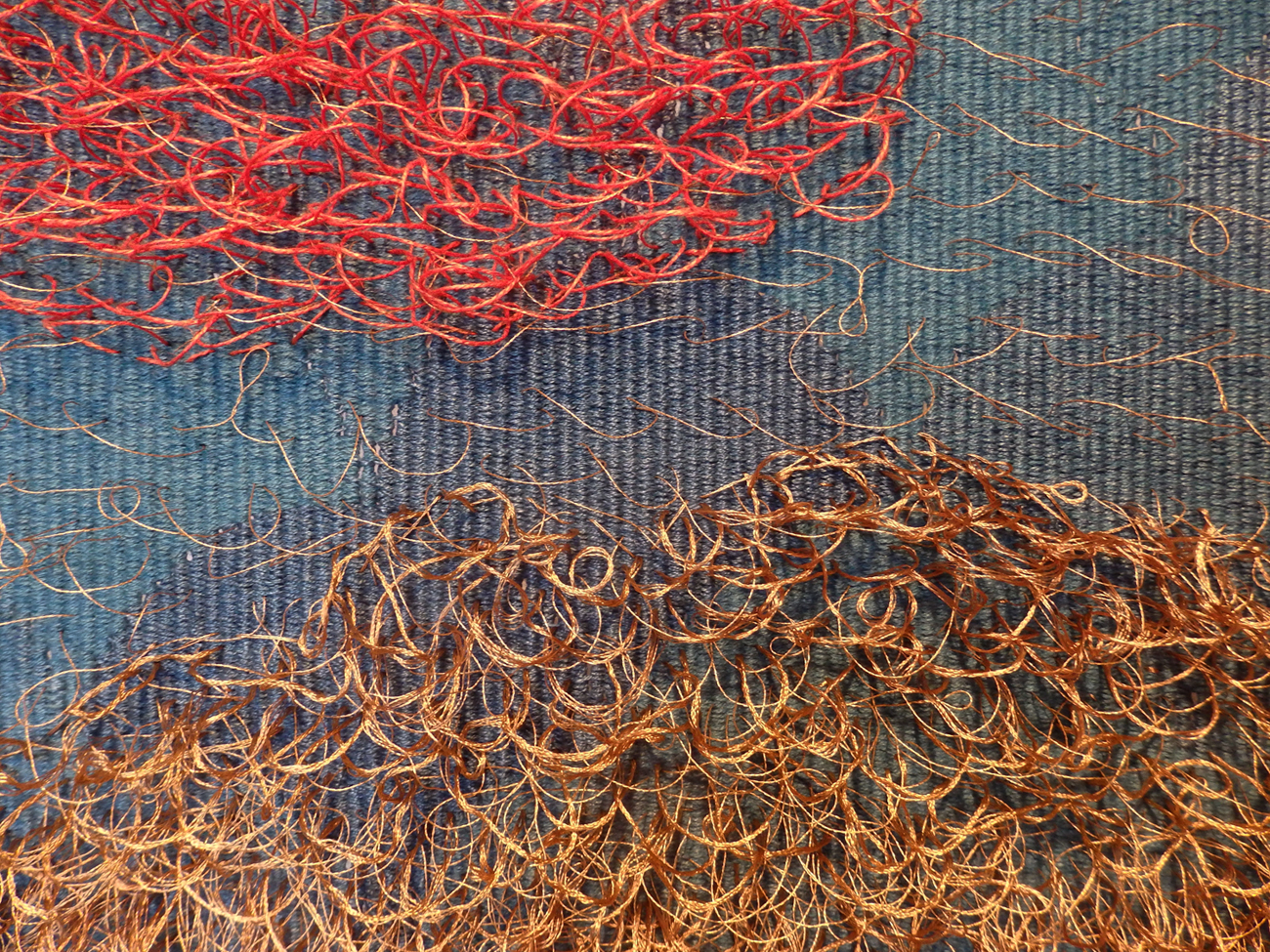
The tapestry I am currently working on does not yet have a name, but has cloud shapes. For the first time, I decided to try to use loops of yarn over the surface rather than tufts. I soon discovered that this is a very slow way to work, even given that tapestry is never a speedy business. With each tapestry, you learn on the job, especially when trying out new ideas. So I have had to decide about density in each area, ie how close together the loops should be, for example, as well as the best way to insert them into the surface. The good thing with working this way is that I can add or subtract these materials as I wish, whereas with the weaving, it must be from bottom to top.
This is what I love about tapestry – effects that can’t be achieved in any other medium. Just please keep your cat away from the tapestry!


